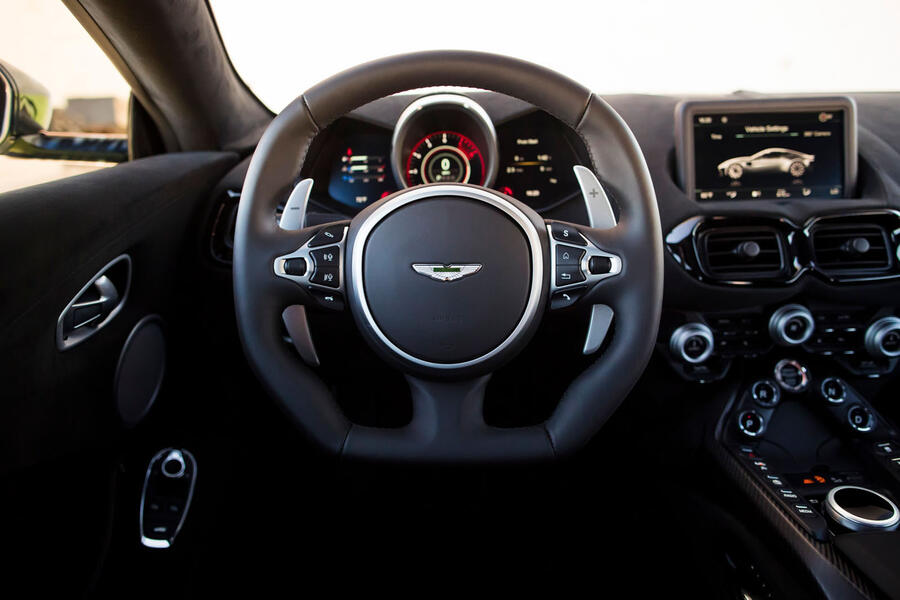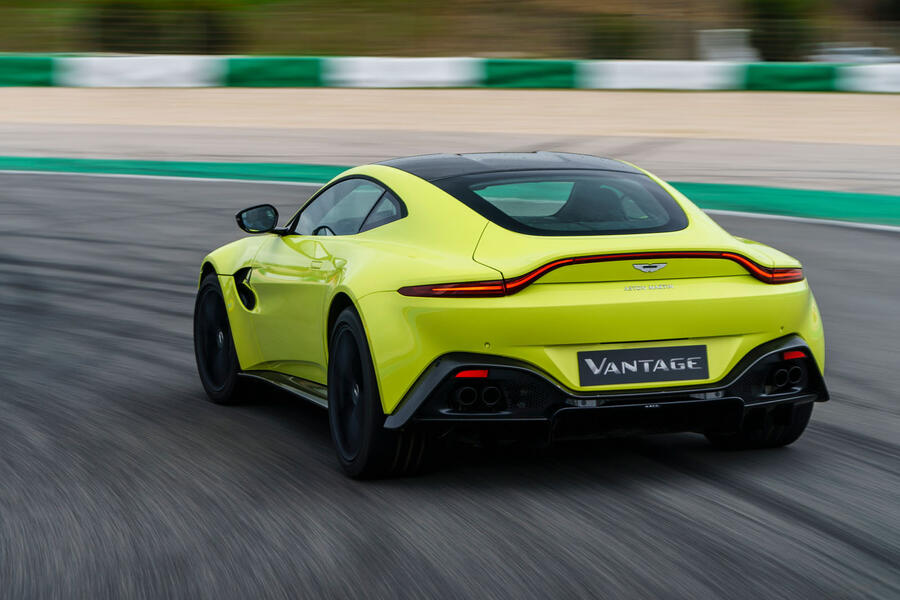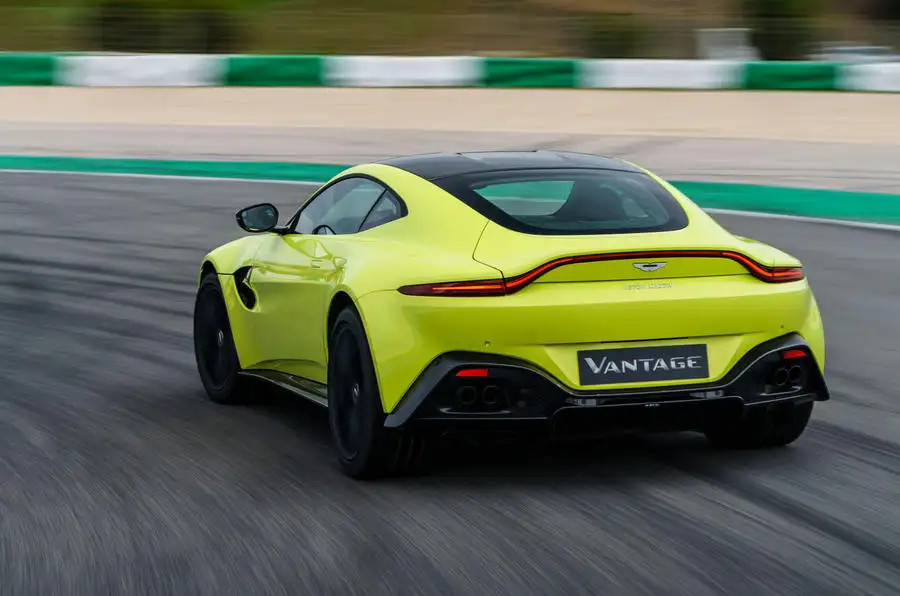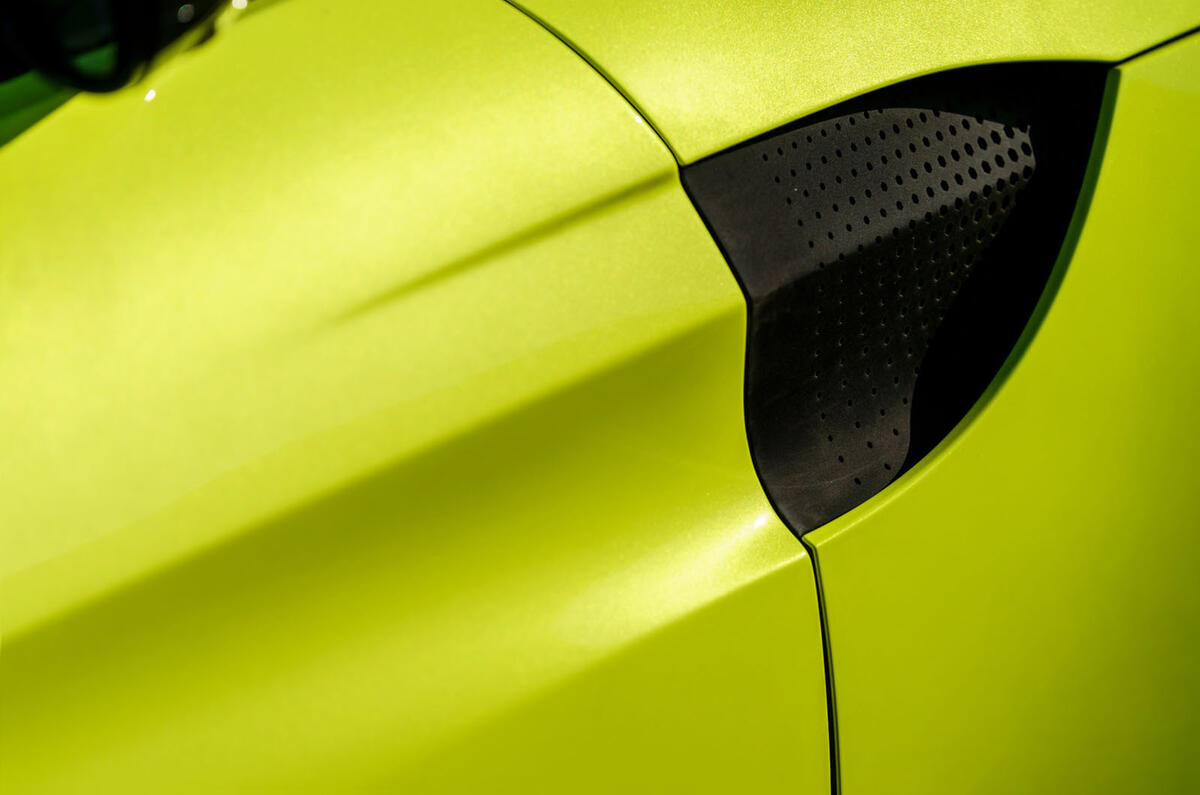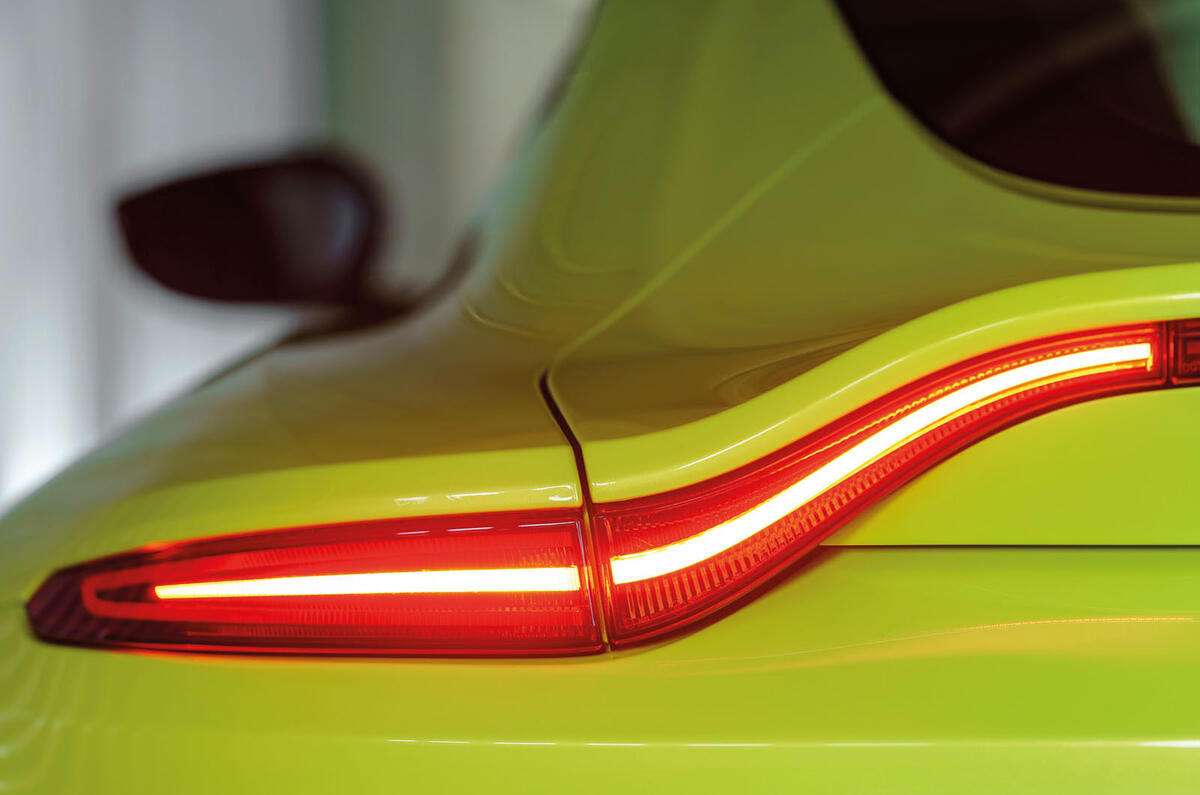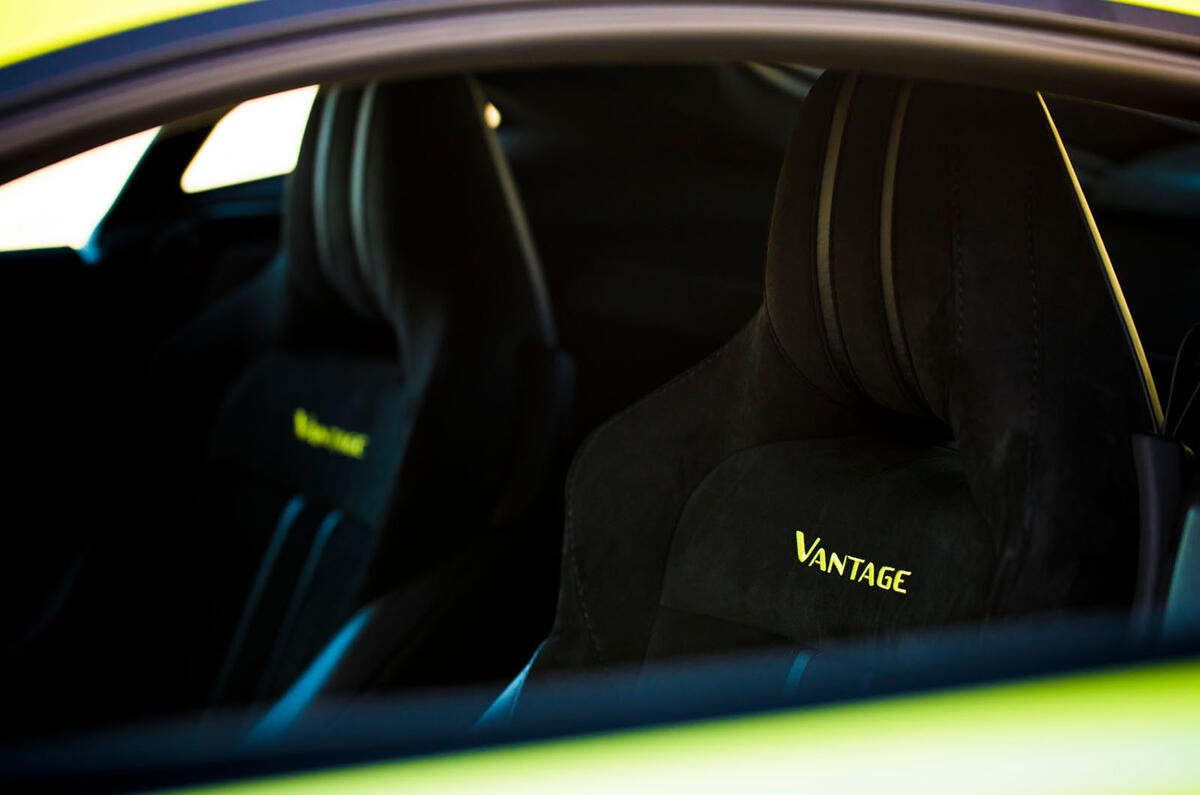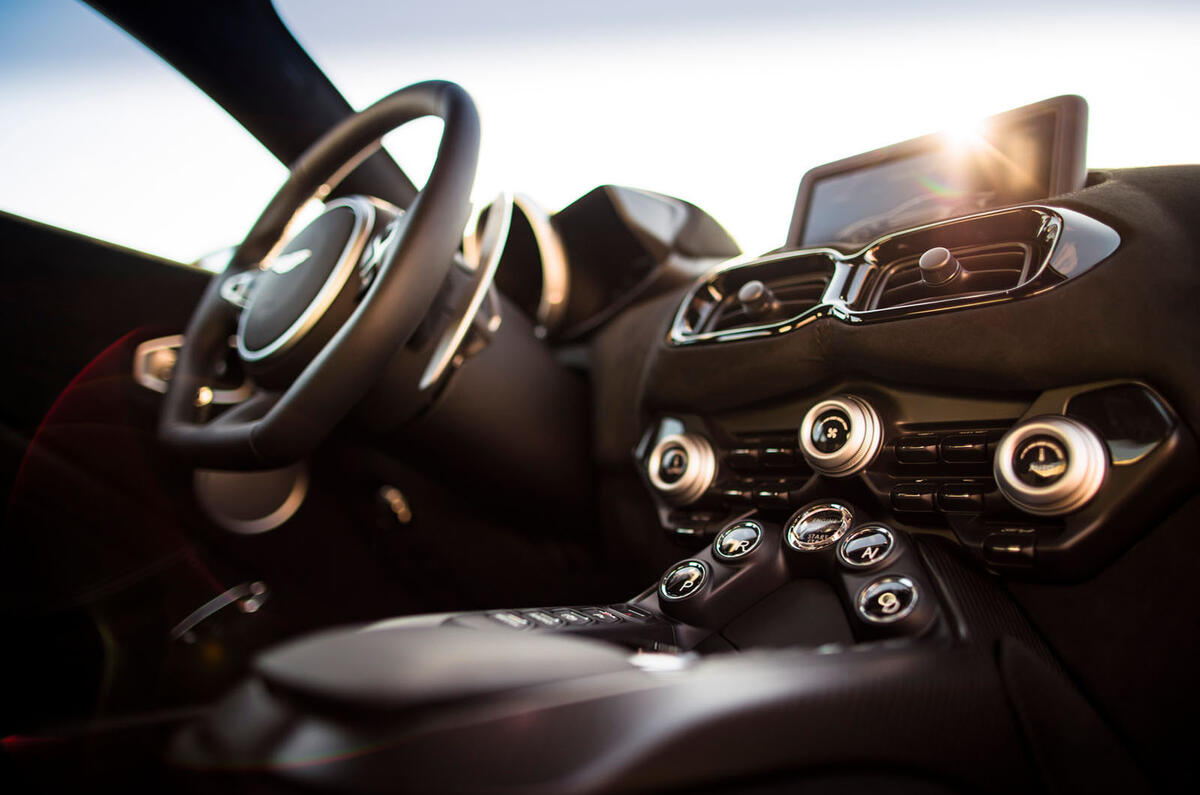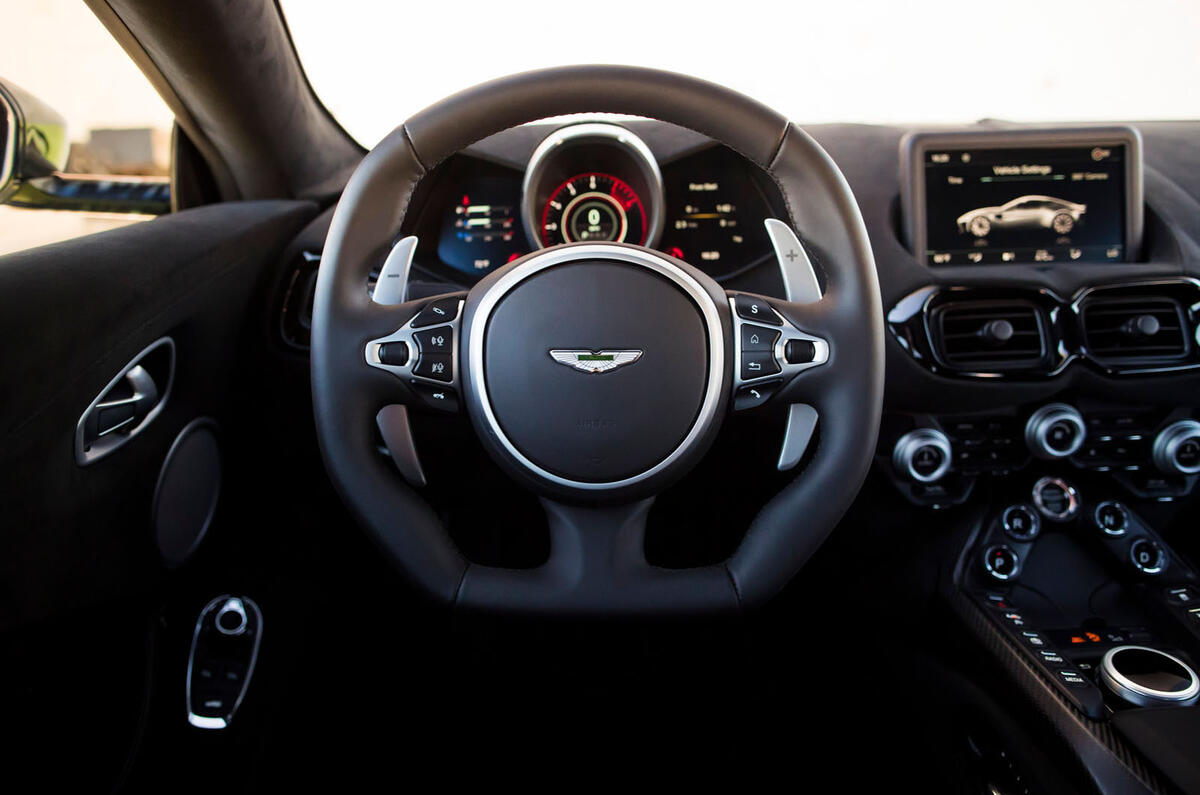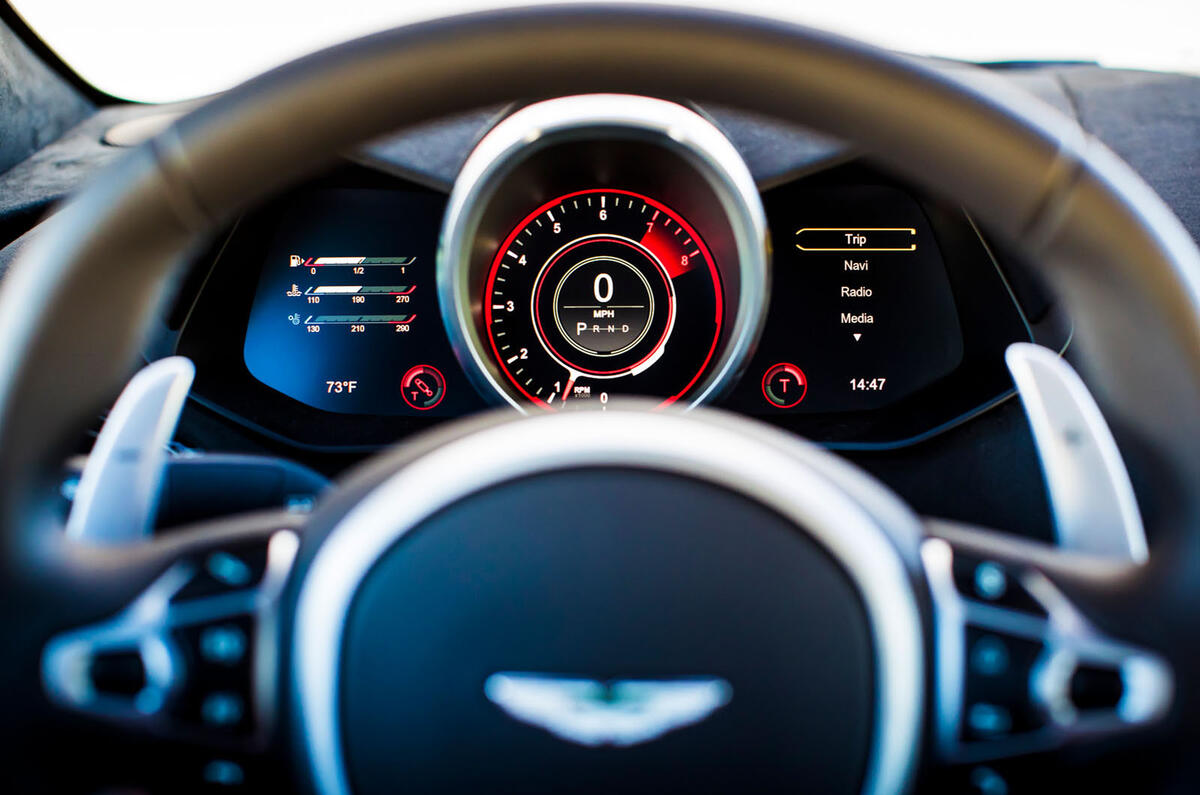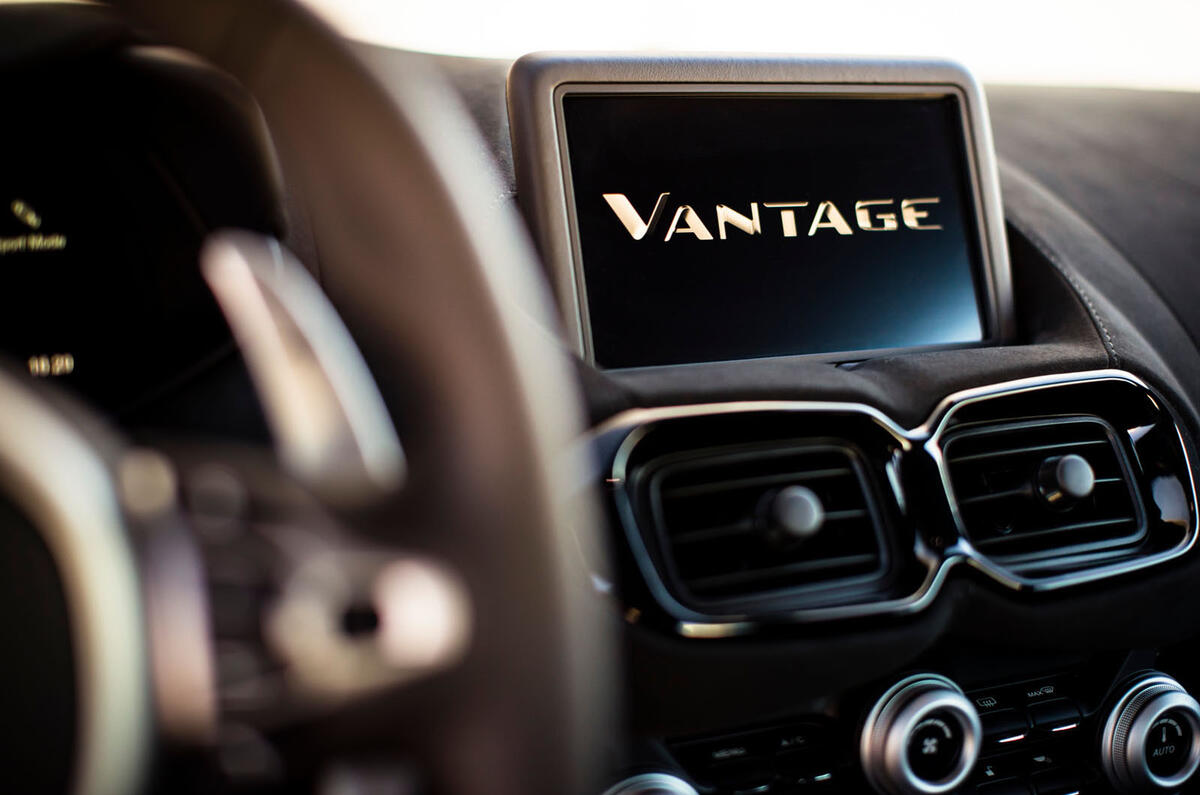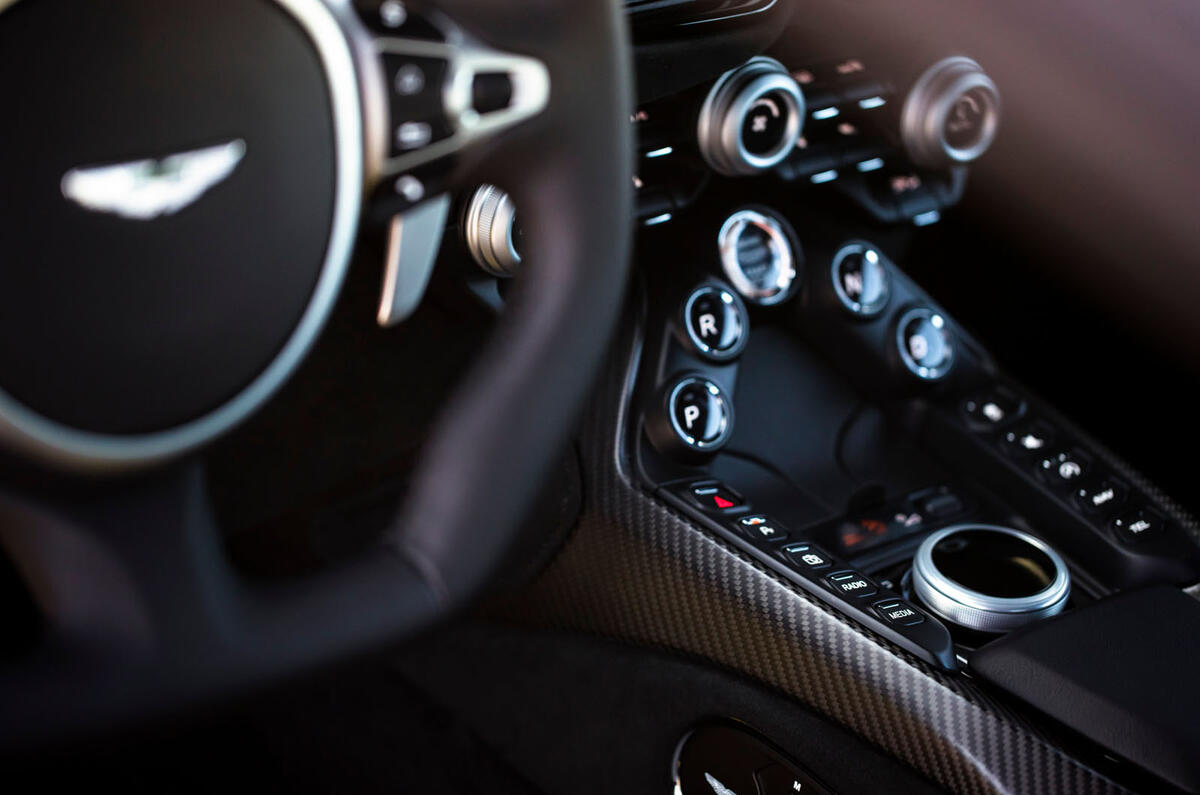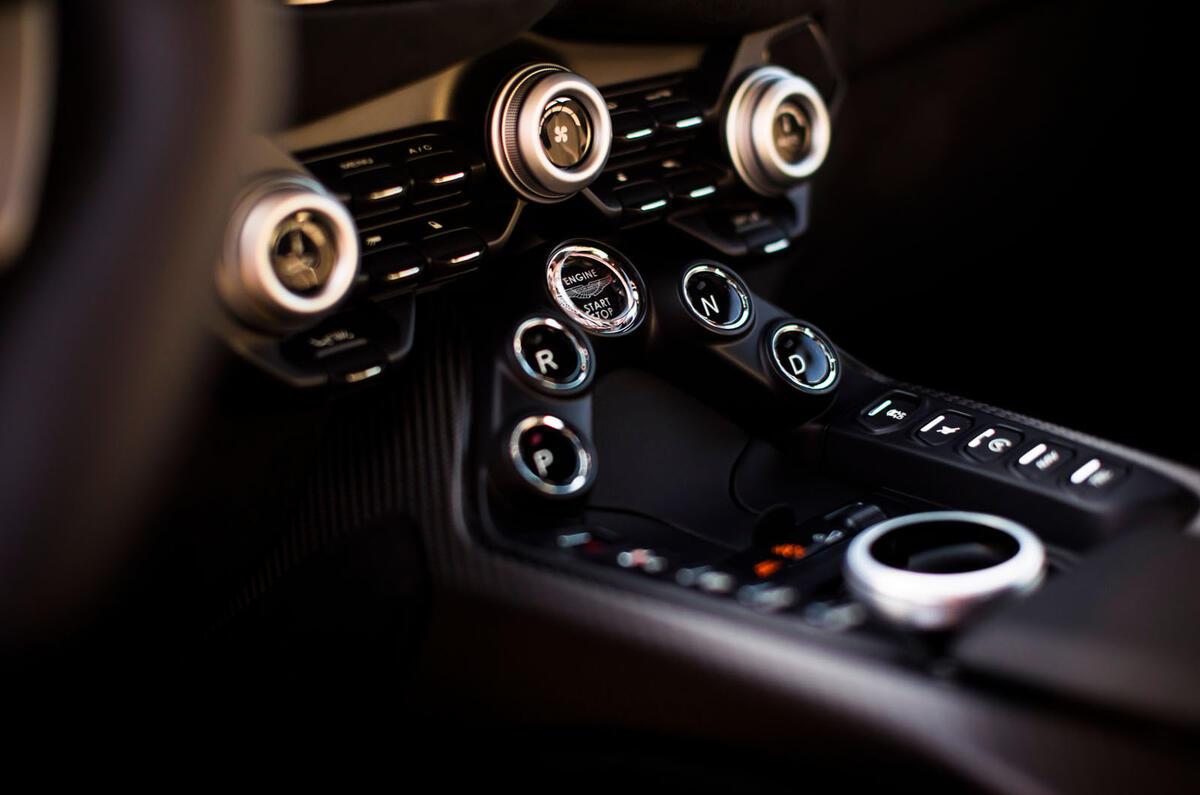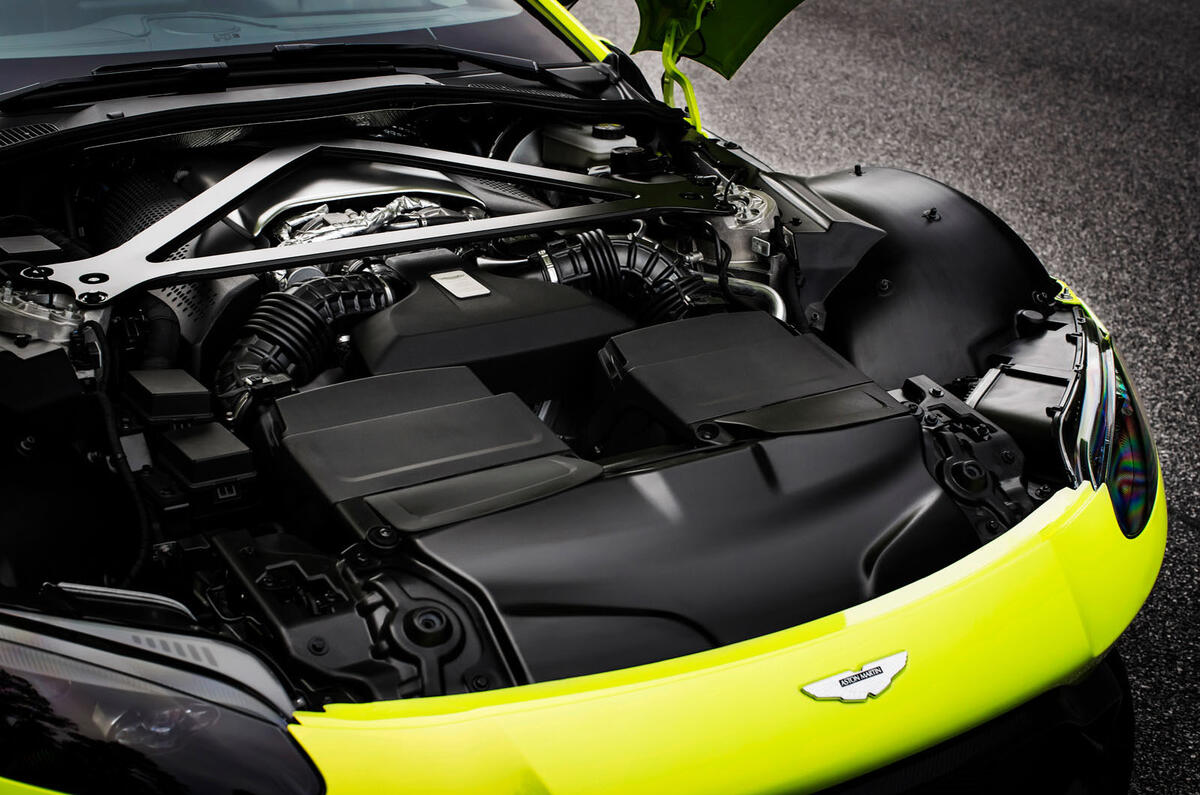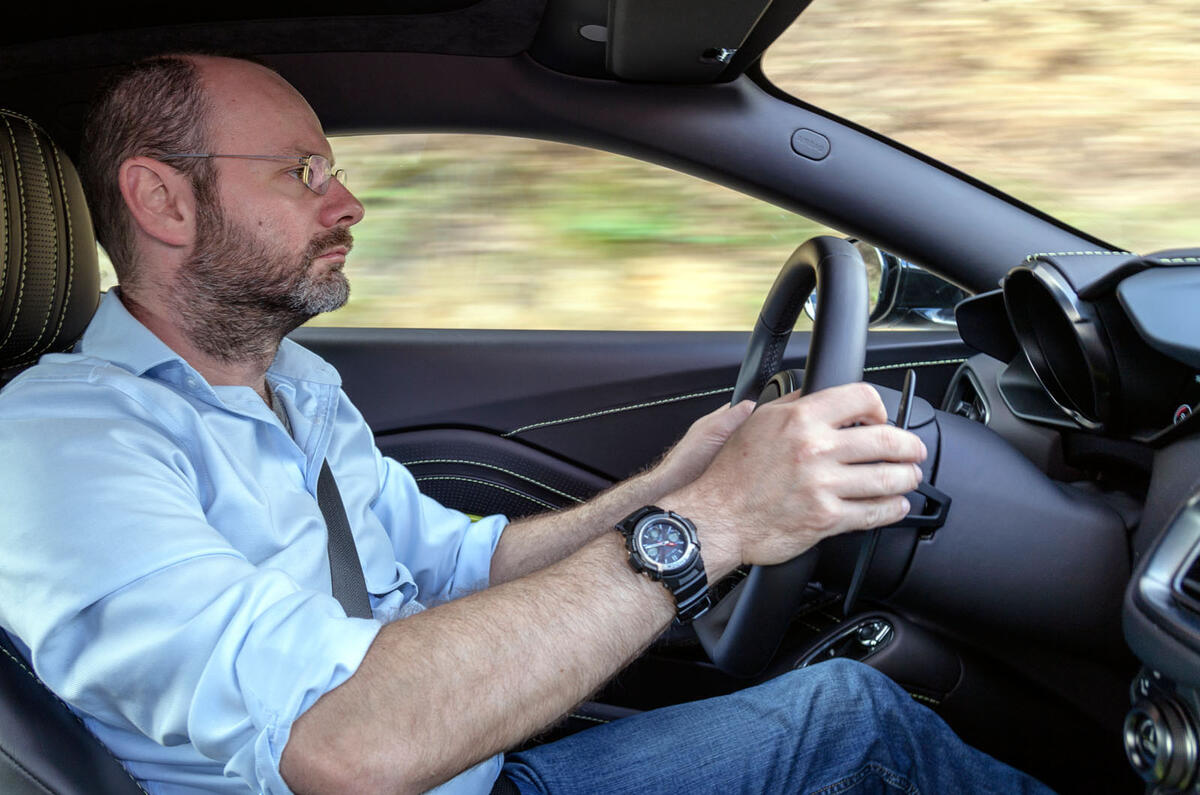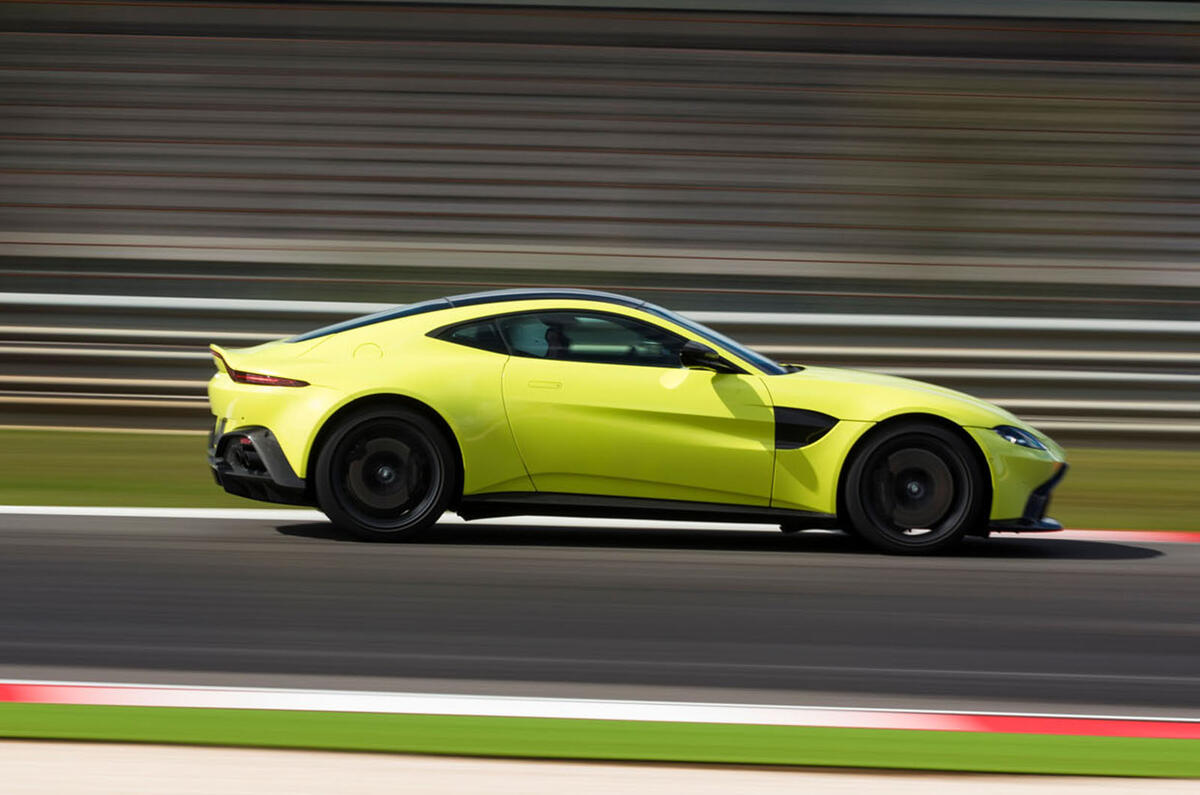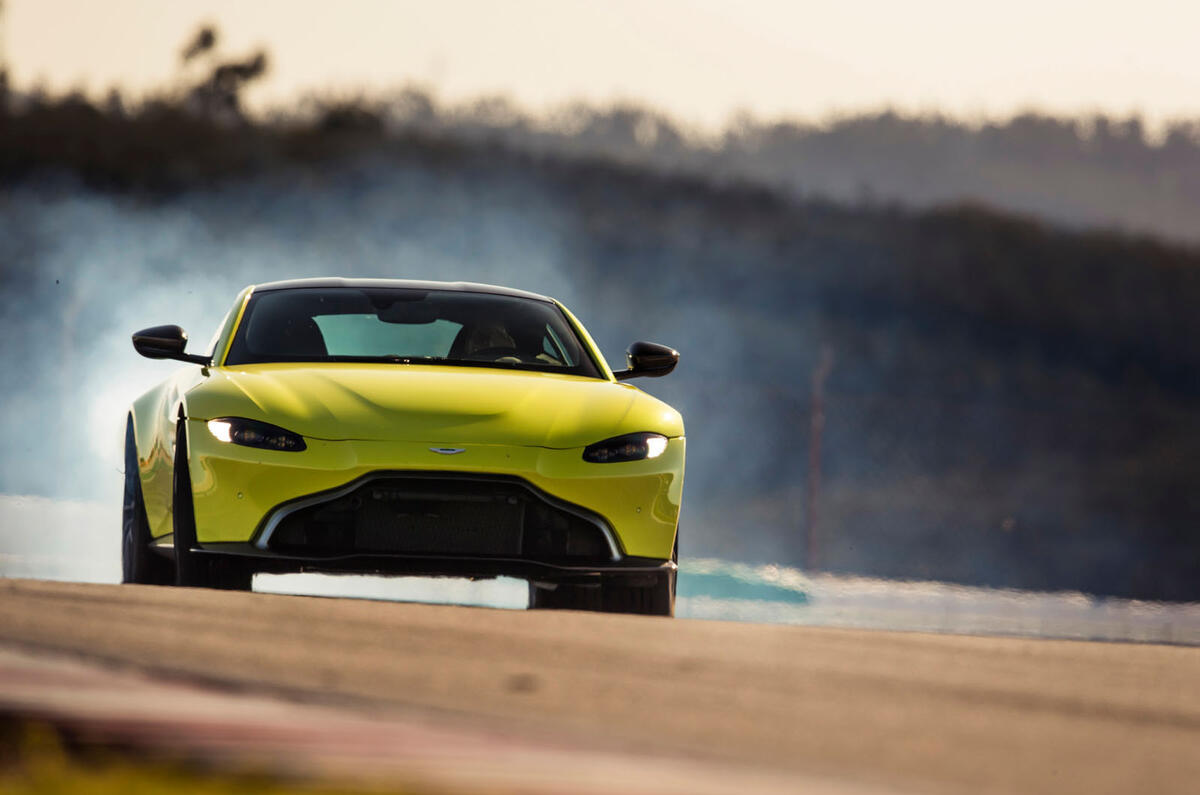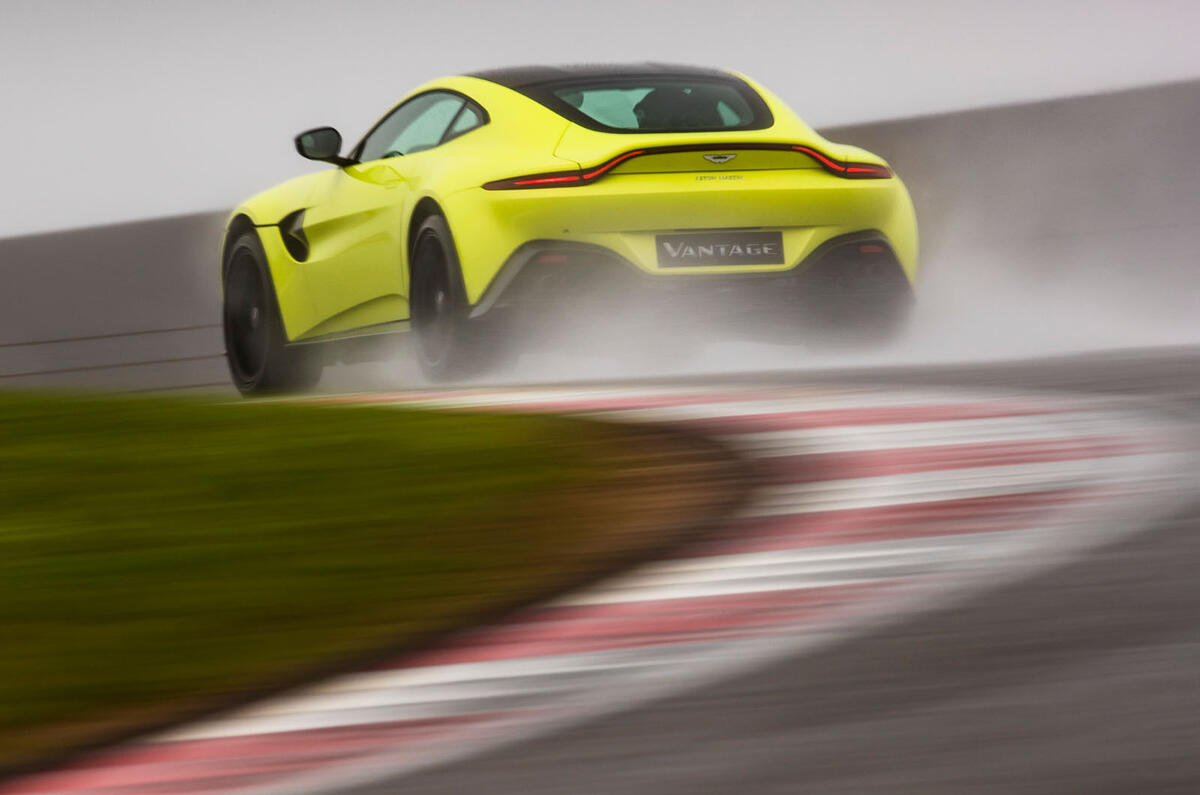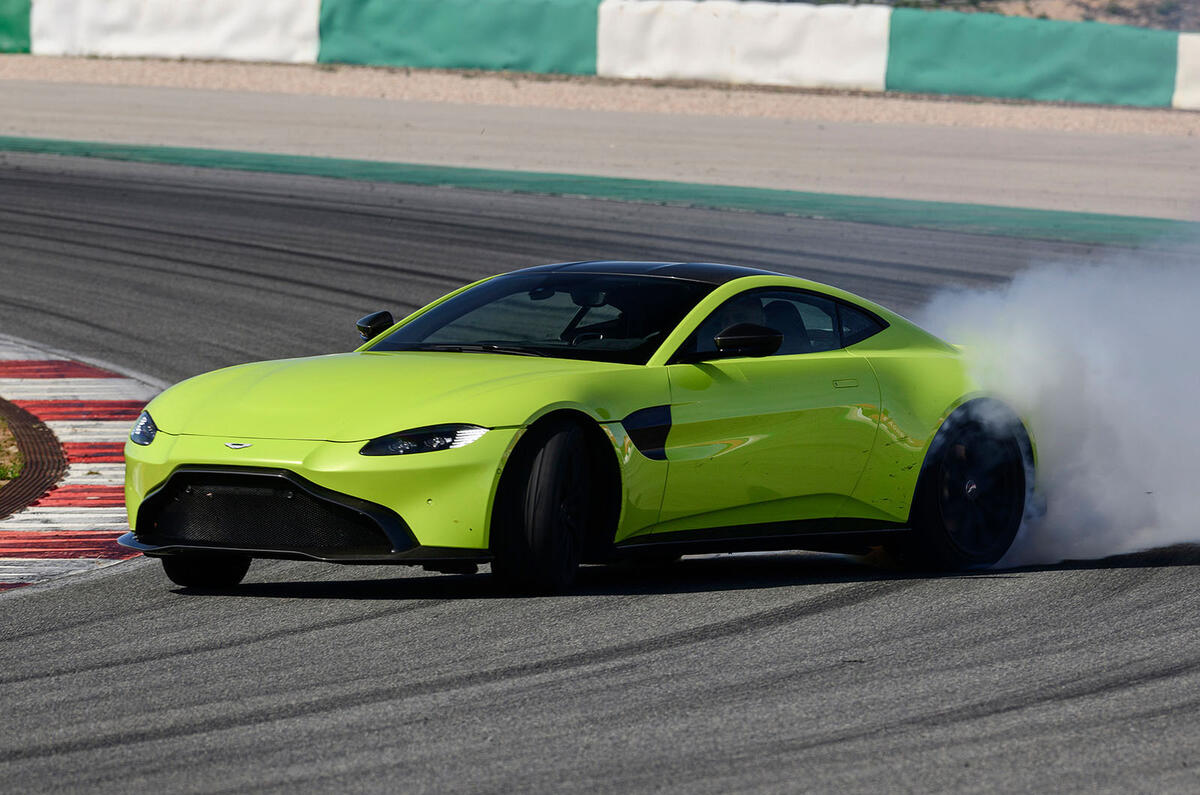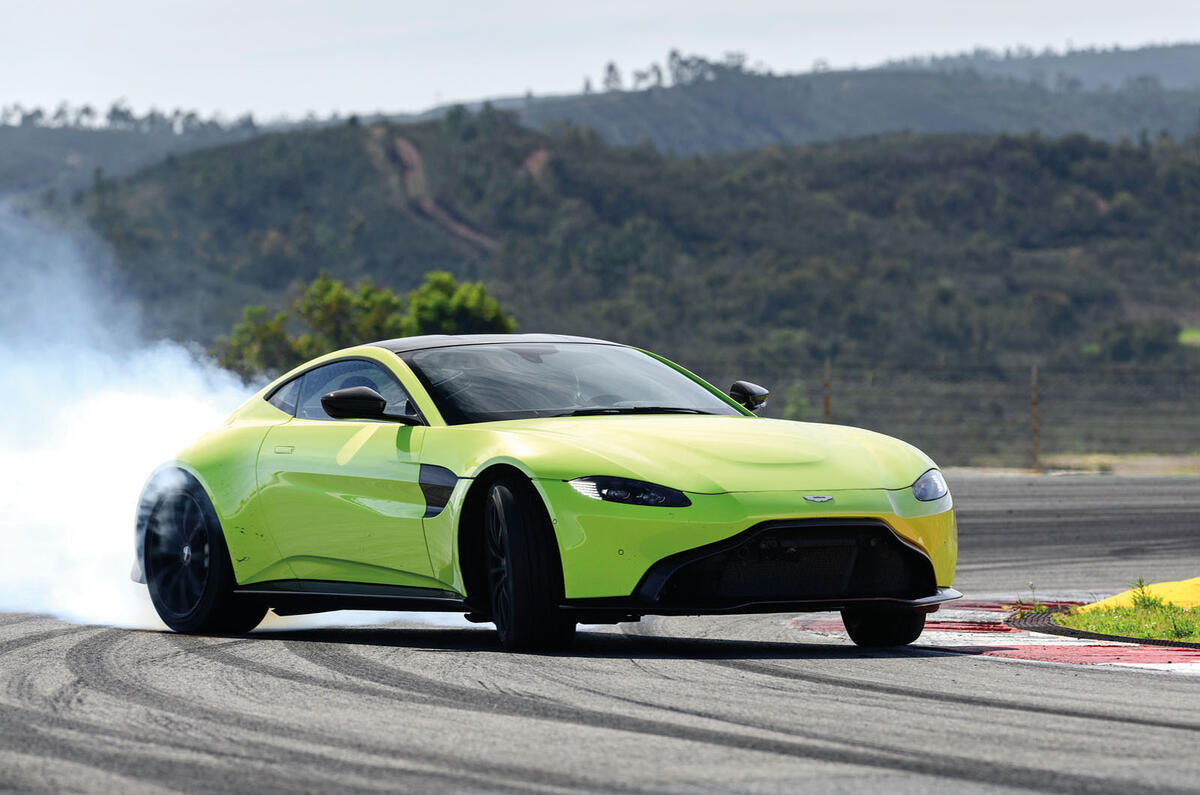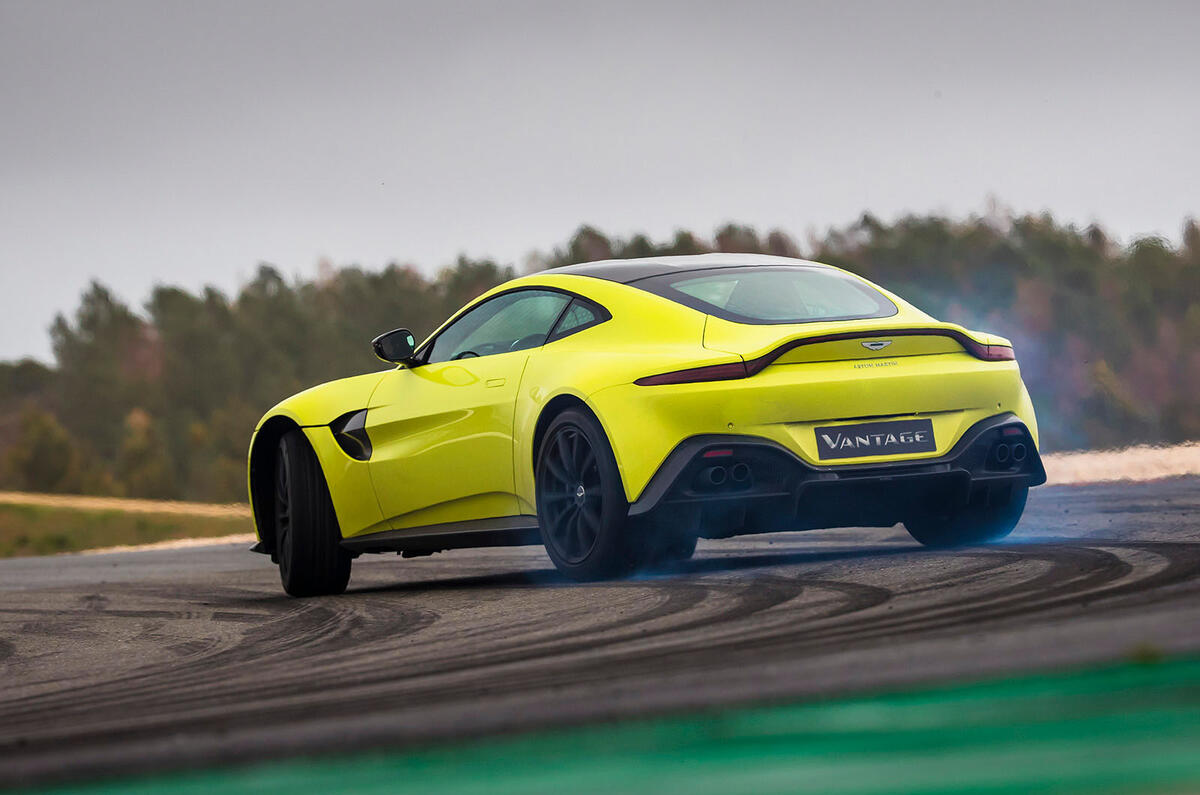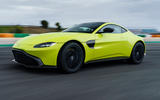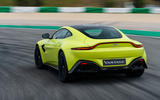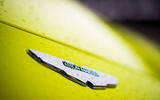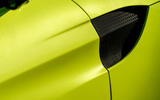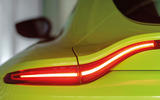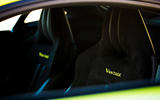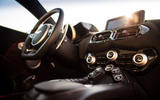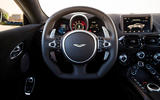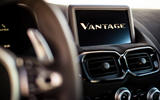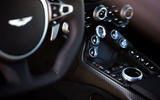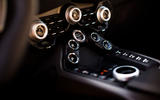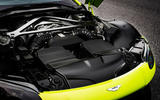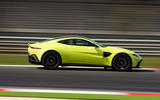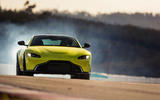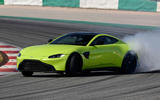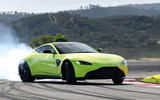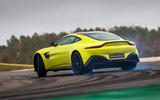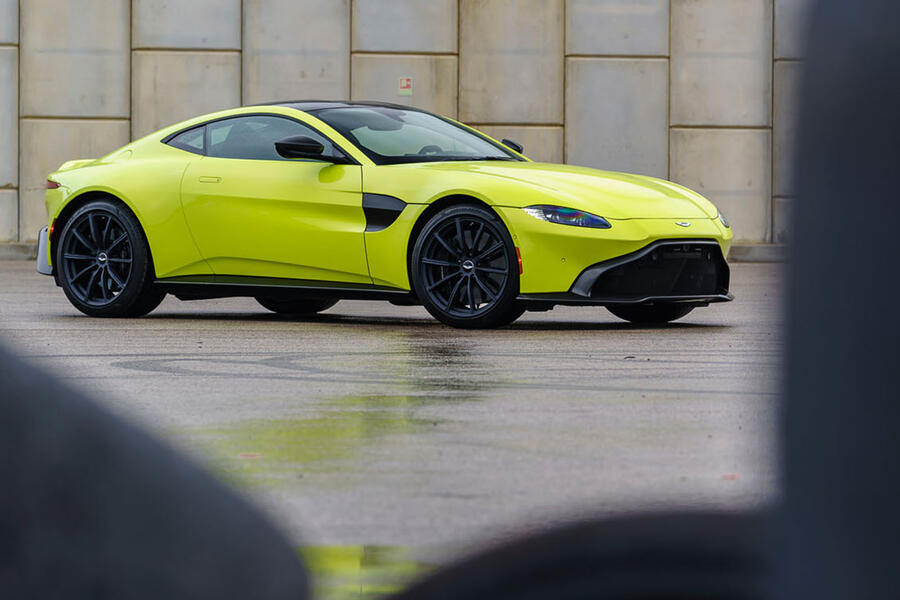For the first time in a generation, the Vantage is wilfully different from other Astons outside (do you like it? I do on three sides; the front I’m getting used to) and inside. I like most of the inside; the finish is good, the plastic on the air vents grates a bit less in a sports car than a grand tourer and you can, apparently, have a round steering wheel.
It all works most nicely with the racier Alcantara trim, to my eyes. The leather looks a bit stretched around some seams and stitches but, well, I suppose it’s a sports car. Shouldn’t things be pulled tight? A bit racy?
Mechanically, it sounds like it is. In the V8 DB11, which shares this engine and its 503bhp tune, the engine note – so raucous and voluble in its AMG applications – has been turned right down. Here, they’ve let it rather loose again. A few years ago, you could have chosen any of several different Astons for the same job. This one, you’re in no doubt, is the loud one. That extends to the drive modes – which, of course, this car has.
Ultimately, these policies mean more to Aston than us. But whereas the DB11 has GT, Sport and Sport+ chassis settings, the Vantage’s dampers are shifted along an imaginary scale to Sport, Sport+ and Track, all intended to be tighter and firmer to the point that Track is arguably too stiff for bumpier racetracks. It’s good on those, though, Aston says. In fact, Aston says, it slides quite easily.
Aston is good at understatement.
Remember a few things. Yes, the Vantage is heavier than a 911, but the 1630kg or so it’ll weigh is competitive among the other company the Aston will keep. Its mechanical layout (the entire block sits behind the front axle line) means the weight distribution is 50/50 front to rear. Only one tyre option, a bespoke Pirelli P Zero, is offered. It has all been engineered by people who believe that cars should handle properly beyond the limit. And 'off' means 'off' on the three-stage stability control. Goody gumdrops.
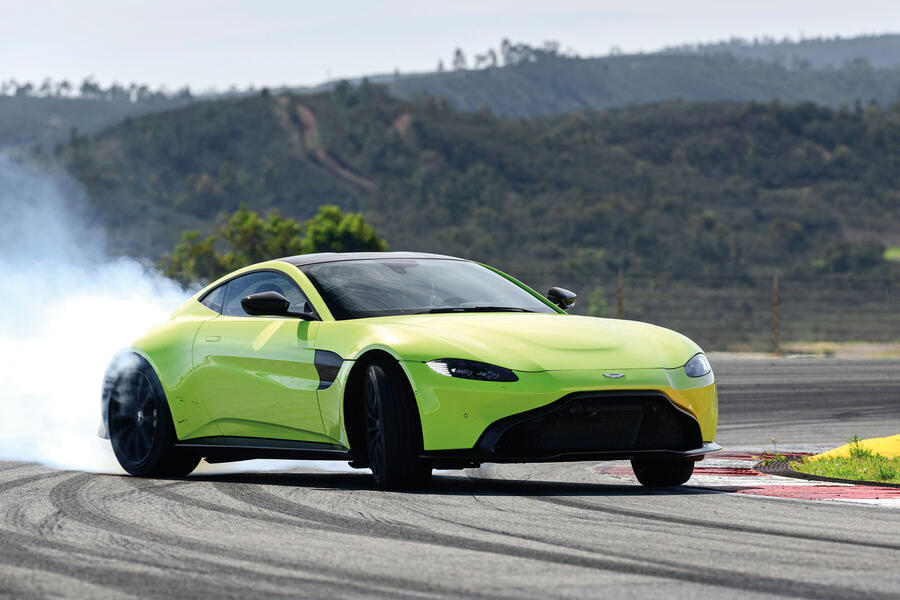
On a circuit, then, the Vantage is terrific. The engine note is as raucous and hard as you’d want it to be, the (optional) carbon-ceramic brakes stop it brilliantly and hold out in warm temperatures, and the tyres resist wear better than 505lb ft from 2000rpm has any right to allow. Body control is good, even in the slackest of suspension modes, and there’s a great sense of agility because it feels like the car pivots around its centre – where you’re seated.
The front goes where you point it and there’s a terrific level of control and precision over the rear. The rear subframe is rigidly, rather than squishily, mounted to the chassis and that apparently gives excellent lateral stiffness, so the car’s back axle does what the engine and e-differential (which can be fully locked or fully open, depending on what’s being asked of it) want it to do.
Under power, on a track, what it wants to do is lock up to precisely your amount of bidding, making the cornering line entirely your choice. It’s not unlike a Ferrari 488 GTB in that fashion; only that, because the engine is mounted low and at the front, the beyond-limit balance is even better, to the extent that I’m not sure there’s another current production car this docile on a circuit.
You can drive it in a racier fashion too, where it’s still balanced and beautifully neutral but less incisive than a 911. So they do different things better. The 911: nuanced steering precision. The Vantage: antics.
Anyway, that’s all jolly, but this is a road car, after all. It’s one whose ride is composed and fluid, especially in Sport mode, but Sport+ doesn’t usually throw it out of kilter. The engine and transmission go through various stages of angry as you turn those up, but the moderate one is good for the road – grumbly and growly and plenty responsive enough – while the big, easy paddles, fixed to the steering column so they’re always where you left them, are some of the easiest to use in the business.
Pulling one puts you in manual mode, an extended pull of the upshift puts you back in D. All shifters should be like this, especially when mated to a gearbox that’s as smooth as the ZF eight-speeder. (It sometimes hesitates to give you downshifts on a circuit, though, which is a Mercedes-ish thing to do, so it's perhaps down to the engine, not the gearbox.)
The steering? On track, it is full of feel; at lower cornering forces, naturally it doesn’t quite replicate on the road. A 911, which has a lightly loaded front end and less need of assistance, is, I think, more talkative – but that’s fine. It is smooth and fast, centres as it should and says as much as you’d hope. The balance and poise are still there, too, albeit with the caveat that this is still a wide car and, from inside, you can see none of the exterior bodywork.
